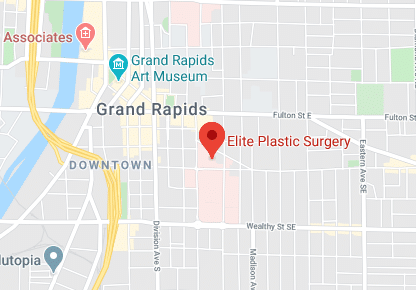
But what is that sun doing to your skin? Sure, it’s aging your skin. After all, that tanning is your skin’s protection mechanism against sun exposure. It’s the melanin darkening for protection from the UV radiation. But is the sun also causing mutations in the cells themselves? Aging is one thing. Skin cancer is quite another.
In July’s two blogs, let’s get into the types of skin cancer and what to look out for, and then how our Elite Plastic Surgeons fix you up if we need to remove it and reconstruct the area.
What is skin cancer?
Skin cancer is an abnormal growth of skin cells. In the two most common forms, basal cell and squamous cell carcinoma, mutations develop in the DNA of the skin cells. This is caused by ultraviolet ray damage. Melanoma can also develop this way, but it can develop on areas that don’t receive sun exposure, too.
There are three basic types of skin cancer, and it is wise for everyone to know the difference between them. There are a couple other forms, but they are quite rare, so let’s just get into the big three.
- Basal cell carcinoma — This usually occurs on areas of the body that are frequently exposed to the sun such as your neck and face. This shows itself as a reddish patch on your skin that stays crusty and won’t heal, or a flesh-colored or brown scar-like lesion. Basal cell carcinomas form on the epidermis, the outer layer of the skin. Basil cell growths are slow-growing and usually easily stopped if caught early.
- Squamous cell carcinoma — This type of skin cancer also develops on areas directly exposed to the sun. It forms in the squamous cells, which are flat cells on the surface of the skin. It often develops in people with darker skin tones. The growths look like a hard, reddish bump on the skin, an open sore that bleeds, or a scaly patch.
- Melanoma — This is the M word, the skin cancer that kills the most people because it can metastasize and spread throughout the body. Melanoma often appears on the face or trunk of men, and the legs of women, but it can develop anywhere, even on skin that isn’t exposed to the sun. For melanoma, watch for a mole that changes size, color, or bleeds. New dark spots on the skin, brown or black streaks underneath a fingernail or toenail. Even a bruise on the foot that won’t seem to go away. Melanoma is dangerous because it can grow downward and start depositing cancer cells into the bloodstream, where they can then end up anywhere in the body.
OK, so now you know what to look for when you’re checking your skin for suspicious lesions after being out on the water this summer. In July’s second blog, we’ll get into how we repair your skin after removing a larger skin cancer lesion. In the meantime, if you need to make an appointment with our team at Elite Plastic Surgery, give us a call at (616) 459-1907.


Comments are closed.